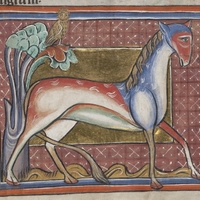The Plausibility of Imaginary Beasts in the Middle Ages
Item
Title
The Plausibility of Imaginary Beasts in the Middle Ages
Description
For this research project, I originally sought to answer the question of whether those who lived during the Middle Ages believed in the mythical animals that populate the bestiaries. It was not long before I came to the discovery that this question was impossible to answer in large part due to the modern-day misinterpretation of medieval bestiaries. That is, they were not natural scientific histories, but rather to provide material for vernacular sermons and moral education for lay members and congregation. The symbolic and theological importance bestowed on these animals suggests that they filled ‘spiritual gaps’ that real animals could not symbolically fulfill. One would think this would answer the question definitively, but the matter becomes more complicated when examining imaginary beasts that appear within Christian texts. Thus, the scope of this project focused on a collection of six beasts dubbed ‘The Satanic Bestiary’, as well as the unicorn, which is used as a Christ-like figure within scripture. Writers from as far back as the thirteenth century have attempted to create their own bestiaries in which real animals are discerned from fictitious ones. Being men of faith, these writers claimed that animals such as unicorns and dragons did, in fact, exist, because it would be blasphemous to deny the existence of creatures that appeared within scripture. Furthermore, schools of thought such as ‘rationalism’ prove helpful in uncovering the origins of the legends of these beasts, but are too literal in their interpretations, proving problematic when applied holistically.
Contributor
Matt Brooks

